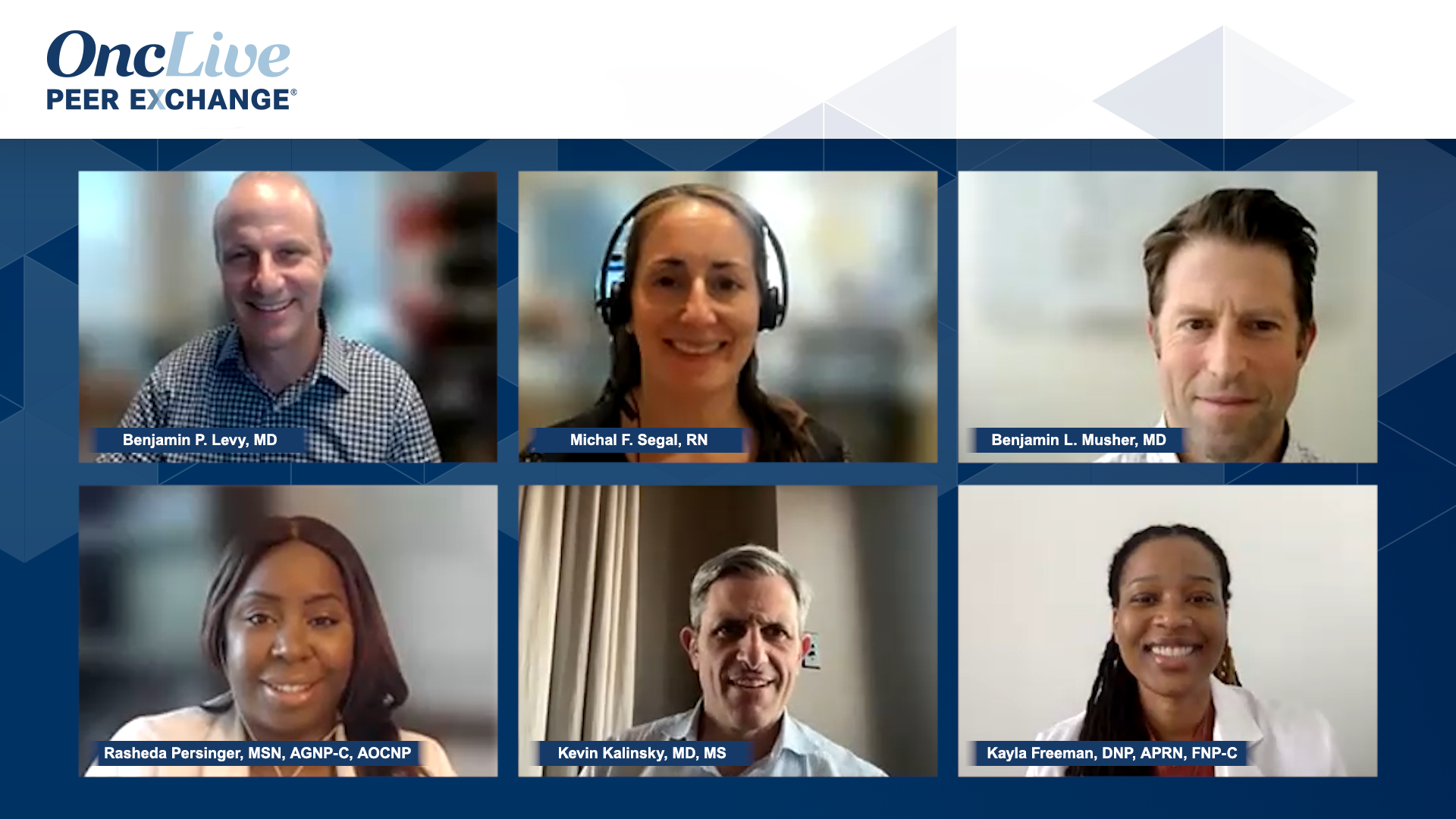- Advertise
- About OncLive
- Editorial Board
- MJH Life Sciences brands
- Contact Us
- Privacy
- Terms & Conditions
- Do Not Sell My Information
2 Clarke Drive
Suite 100
Cranbury, NJ 08512
© 2025 MJH Life Sciences™ and OncLive - Clinical Oncology News, Cancer Expert Insights. All rights reserved.
Future Directions in Gastric Cancer Treatment
Specialists in gastric cancer look to the future treatment landscape and review ongoing research in the disease space.
Sponsored in part by Daiichi Sankyo. Content independently developed by OncLive®.
Transcript:
Benjamin P. Levy, MD: Are there any other comments on TROP2? I promised I would be on time here and spend the last 10 minutes on where we're heading. We've covered efficacy and toxicity and each discipline of both the HER2-directed ADCs [antibody-drug conjugates] and the TROP2-directed ADCs. We've got about 10 minutes here. I’m not going to start with Kevin because he always gets to go first, maybe I'll start with Ben [Musher] and Michal [Segal]. In terms of gastric [cancer] where is this field heading? Is it new ADCs or a combination of ADCs with different drugs? Is it better biomarker selection, or is it just as you said, Ben, it's like moving your best drug up front and getting it first? Ben, maybe you can start with your thoughts on where these drugs are headed. And I will say, it is okay to say, look, these drugs are overhyped. You know, I think some of us feel like these are great drugs, but maybe we need to develop new models. I mean, I'm clearly enthusiastic about them. I know we deal a lot with these. But what are the real possibilities moving forward?
Benjamin L. Musher, MD: Yeah, stomach cancer is tough. I mean, you know, there aren't that many targets that have been identified yet, especially as I mentioned before, these signet-ring, poorly differentiated, diffuse-type cancers are just absolutely brutal with really nothing except for chemotherapy for the vast majority of them. So, we have to keep looking for new targets for the newer exciting ones, such as claudin, which you'll probably know about already, that's potentially a target for an ADC. They're even looking at a CAR T cell right now that targets claudin, which is sort of interesting. Immunotherapy remains something interesting. I think that for the time being we know that FISH [fluorescence in situ hybridization] and mismatch are important for more and more data about EBV [Epstein-Barr virus], but we're not even totally sure how to deal with those quite yet. So, with gastric cancer, unlike breast, I don't know about lung, is if the expression is driving anything, the expression is quite heterogeneous, not only in space, but also in time. So, in any given tumor, we know that it's not heterogeneous throughout the tumor, but different tumors throughout the body at different times of the disease, which is why a lot of us will go ahead and rebiopsy and retest later on for expression of certain proteins, especially PDL, HER2, and then, I guess to a certain extent maybe, PD-L1, but HER2 for sure. I don't have a great sense of where all this is going as far as ADCs are concerned. Some have already been proven not to be as effective, including a T-DM1 [trastuzumab emtansine], which did not really show efficacy at all or very much at all. Not enough to proceed with it. But I know some of the new ones—sacituzumab, as you guys talked about, that is in… there's a basket trial that I think maybe is already finishing up and will hopefully be expanded. But that's as far as what I know about and can comment on, on this subject.
Benjamin P. Levy, MD: Michal, [what are] your thoughts just in terms of where you see the field moving, and what you guys are doing at Memorial [Memorial Sloan Kettering Cancer Center]?
Michal F. Segal, RN: We've had an ongoing trial now for a few years. That's, as you said, giving trastuzumab deruxtecan first line. So it's like fluoropyrimidine oxaliplatin pembrolizumab. And instead of Herceptin or trastuzumab, this trial is giving trastuzumab deruxtecan upfront. So that's the main one for that drug. And then, as was mentioned, claudin is a big thing we're pursuing now. We have the CAR T-cell claudin study and a couple of other claudin-selected studies.
Transcript is AI-generated and edited for clarity and readability.


